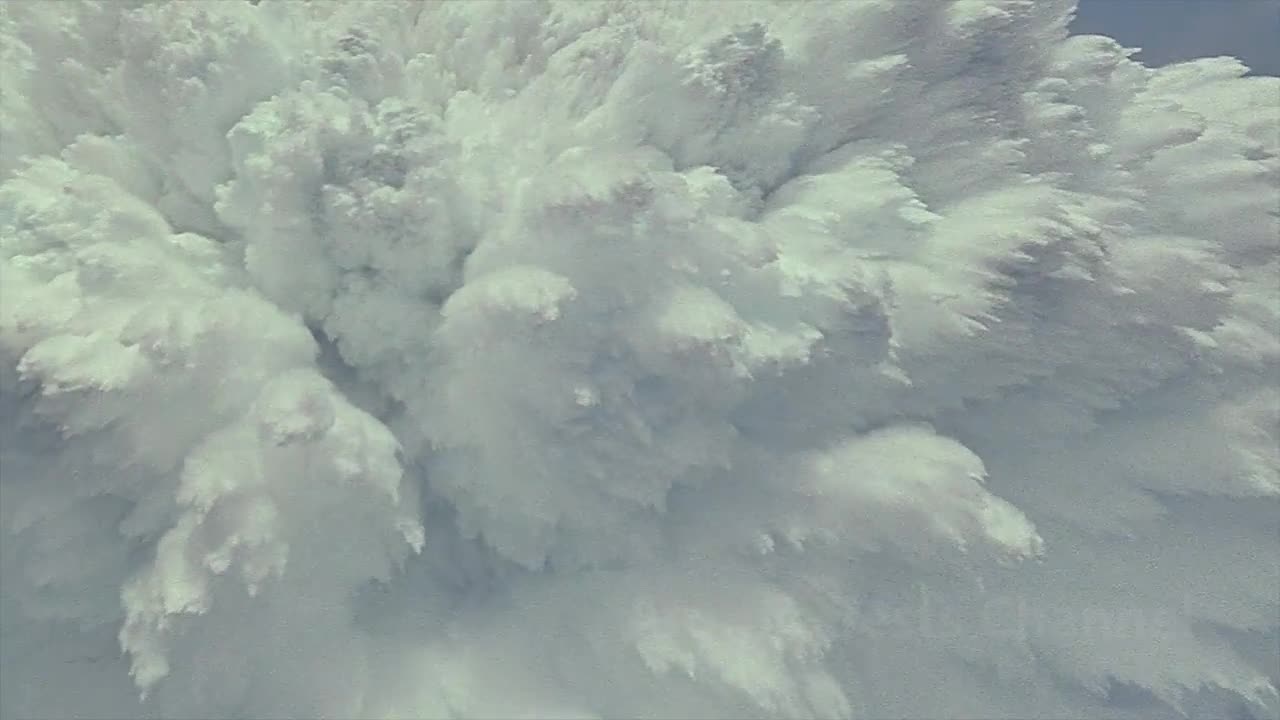Premium Only Content

Unedited 150-Meter Footage of the 1958 Underwater Atomic Blast
ChatGPT
On May 16, 1958, the conditions for the Wahoo nuclear blast test were met, leading to the detonation of the nuclear device. Within one second of the detonation, a remarkable spray dome emerged, soaring to an astonishing height of 840 feet (260 meters) after just seven seconds. The spray dome took on the shape of a cone with sloped sides at a 45-degree angle. Plumes broke through the spray dome after six seconds, radiating outward in all directions. The vertical plume continued its ascent for 12 seconds following the blast, while the lateral plumes extended for 20 seconds before collapsing. By the 20-second mark, the spray dome's diameter had expanded to approximately 3,800 feet (1,200 meters).
The base surge, traveling in the downwind direction, reached a radius of 8,000 feet (2,400 meters) just 1.7 seconds after the blast. Aided by a 15-knot (17 mph; 28 km/h) wind, the downwind surge achieved speeds of 21 knots (24 mph; 39 km/h). This base surge remained visible for three and a half minutes, lingering longer when observed from the air as it continued its course across the ocean. Once the spray dome and base surge dissipated, a foam patch emerged, stretching from the point of the blast on the water's surface to cover over 6,000 feet (1,800 meters).
The nuclear blast was calculated to be equivalent to 9 kilotons of TNT (38 TJ). Remarkably, all fallout remained within the predicted fallout area, with a maximum radiation level of 0.030 R/hr. The target ship, positioned at 5,900 yards (2.9 nautical miles; 3.4 miles; 5.4 kilometers) from the epicenter, directly absorbed the shockwave, causing the entire ship to vibrate and shake violently. The Moran merchant marine ship, anchored at a distance of 2,346 feet (715 meters), was immobilized due to shock damage inflicted upon its main and auxiliary equipment, in addition to experiencing minor hull damage.
One hour and ten minutes after the detonation, a water sample, taken directly above the blast site, registered a radiation level of 5 R/hr. Remarkably, the retrieval team entered a field with a radiation level of 3.8 R/hr just one hour and thirty-five minutes after the detonation
-
 LIVE
LIVE
Wendy Bell Radio
6 hours agoBurn Baby Burn
7,809 watching -
 LIVE
LIVE
JuicyJohns
1 hour ago $0.63 earned🟢#1 REBIRTH PLAYER 10.2+ KD🟢$500 GIVEAWAY SATURDAY!
154 watching -
 LIVE
LIVE
LFA TV
12 hours agoLFA TV ALL DAY STREAM - THURSDAY 7/31/25
4,505 watching -
 1:02:45
1:02:45
Game On!
18 hours ago $2.56 earnedFootball is BACK! NFL Hall of Fame Game 2025
17.3K2 -
 1:55:56
1:55:56
FusedAegisTV
23 hours ago3rd Party Partner Showcase Nintendo Direct! REACTION 7.31.2025 | FusedAegis Presents
13.2K -
 13:30
13:30
WhaddoYouMeme
18 hours ago $3.66 earnedIt All Makes Sense Now
20.5K24 -
 2:00:05
2:00:05
Nick Freitas
17 hours agoIs Conservatism Dead?
22.8K23 -
 LIVE
LIVE
PudgeTV
9 hours ago🟠 Gaming on Rumble | Frostpunk 2 - Completing Chapter 2
93 watching -
 22:07
22:07
Jasmin Laine
18 hours ago'You Think This Is NORMAL?!'—U.S. Official STUNS CTV With BRUTAL Mic Drop
22.3K39 -
 2:00:40
2:00:40
BEK TV
1 day agoTrent Loos in the Morning - 7/31/2025
18.2K1